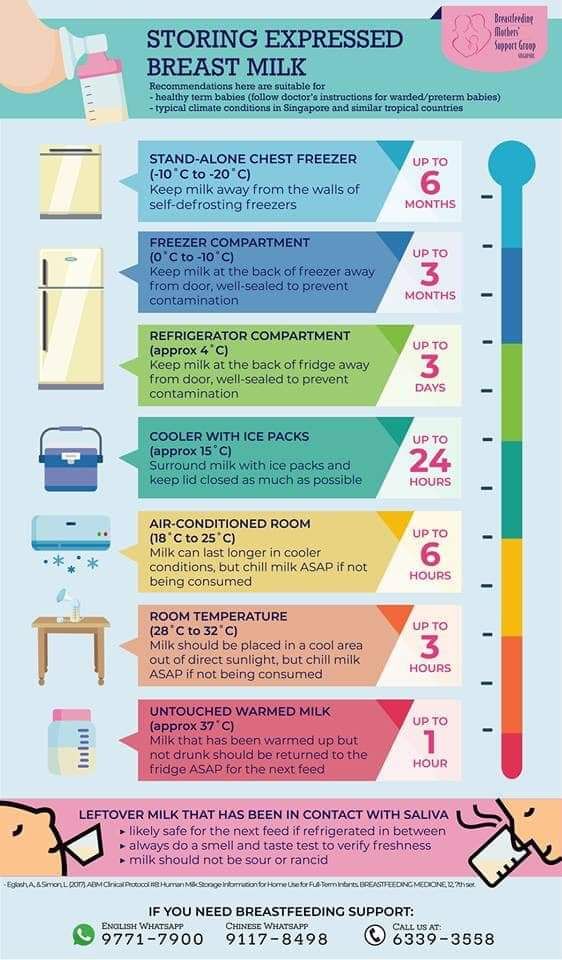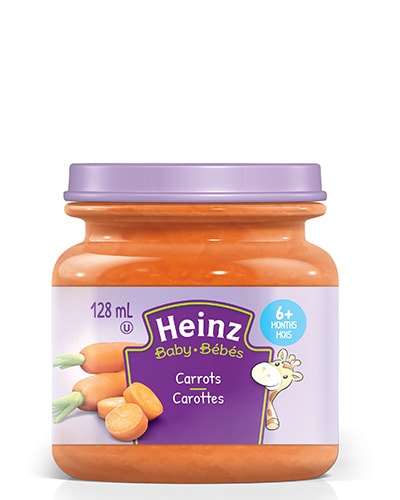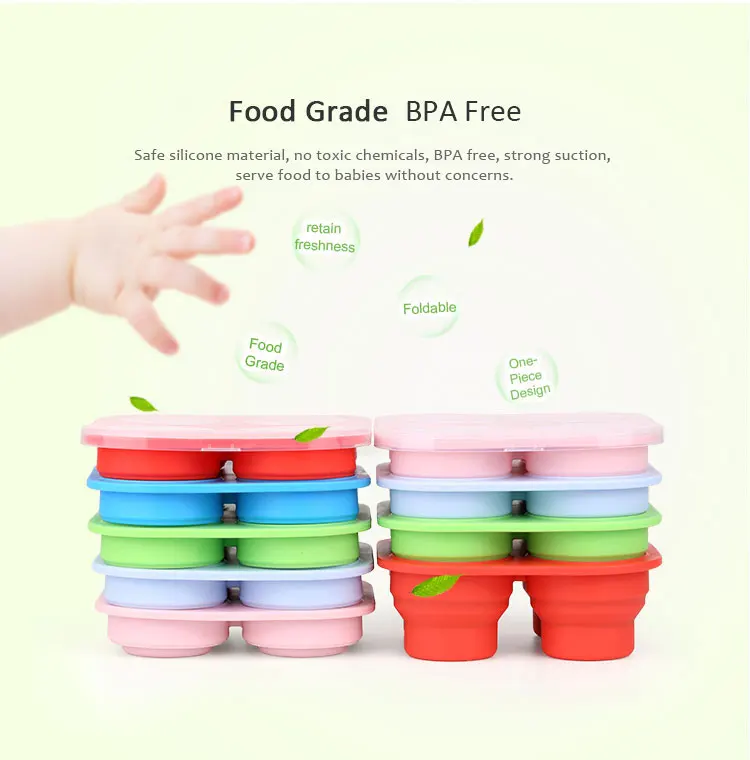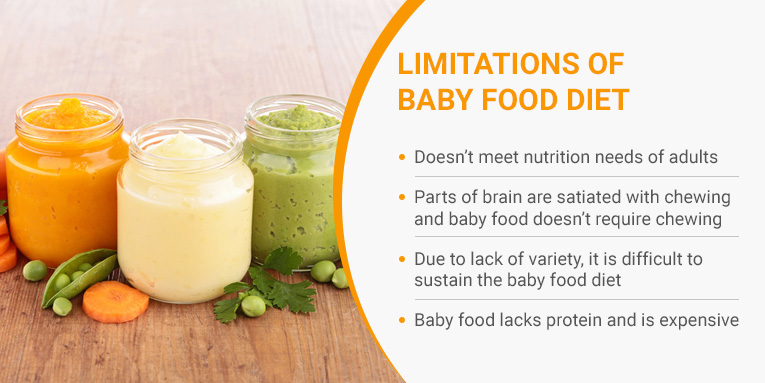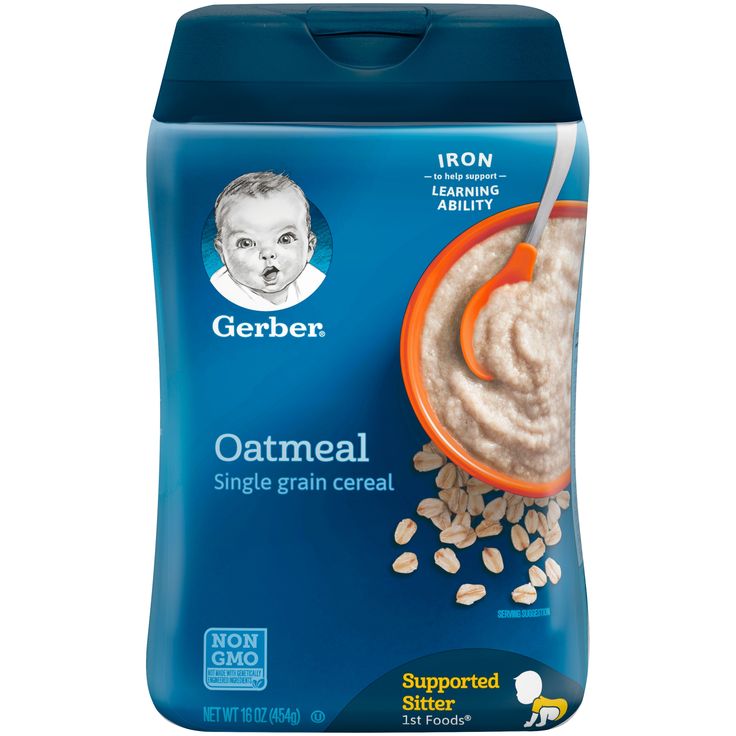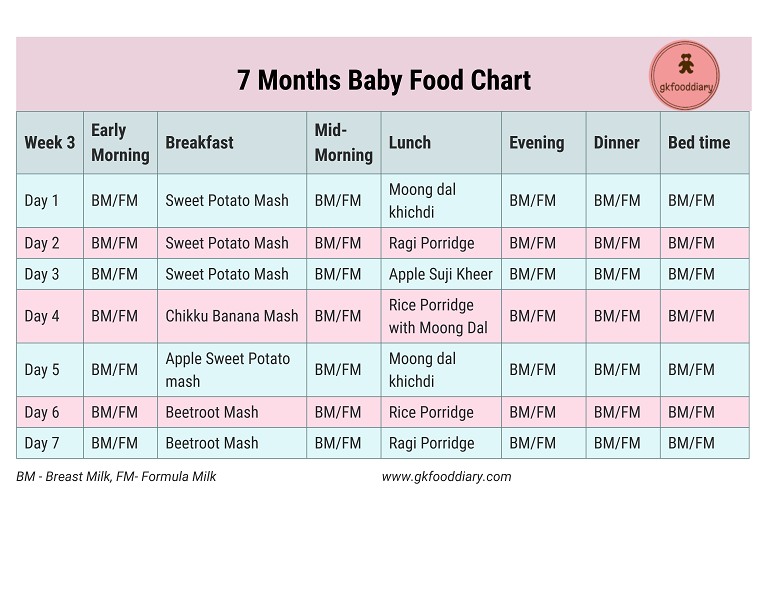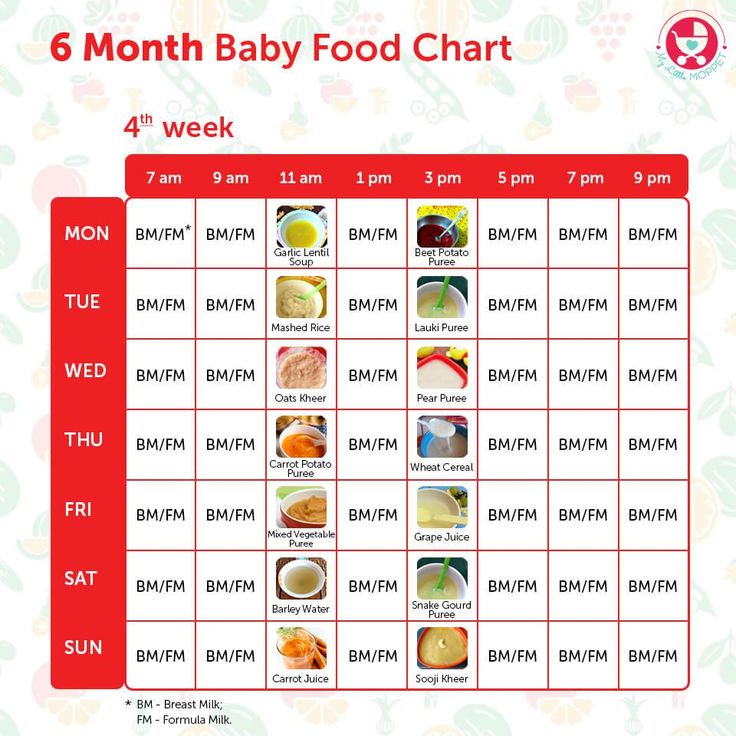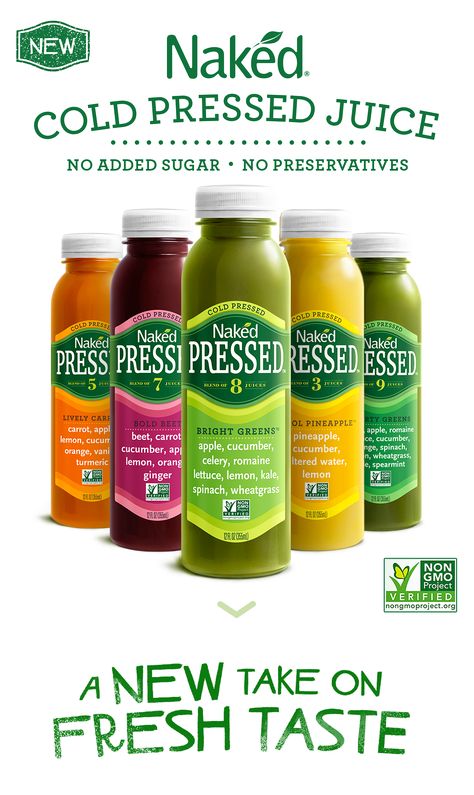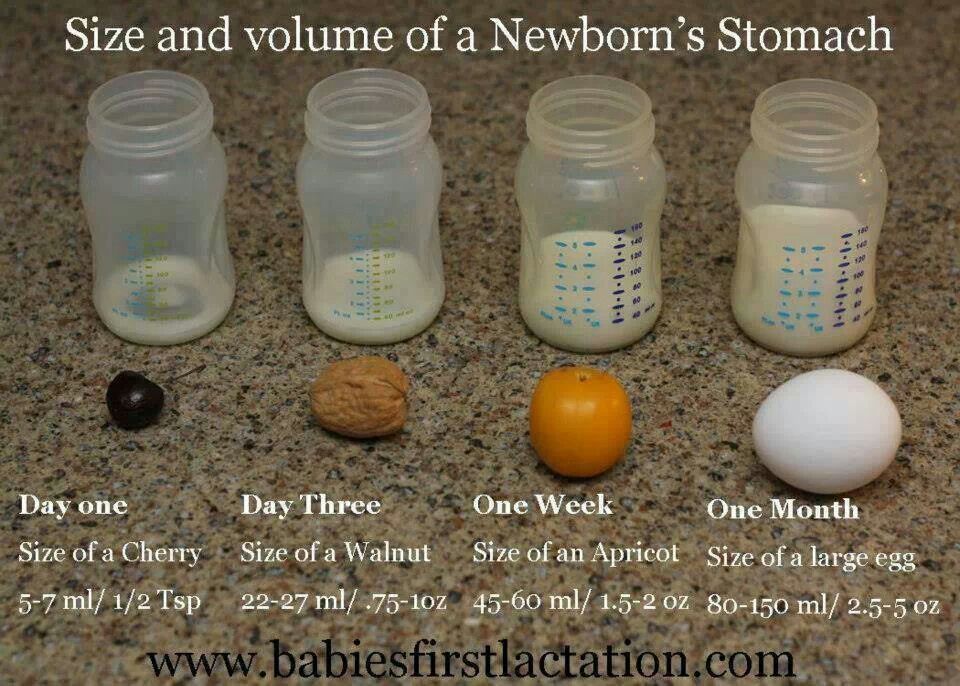Storing frozen baby food
Tips on Freezing and Best Containers
Learn the secrets to storing and freezing homemade baby food for ultimate freshness—AND the best baby food storage containers to use to ensure that you never waste what you make!
Baby Food Storage
Going through the effort to make homemade baby food really only works if you have a good plan for how to store the food to ensure that it stays fresh and that baby has plenty of opportunities to enjoy it. After making a LOT of baby food for my third kiddo to send with him to daycare, I got into a good routine of making and storing baby food—both in the fridge and freezer. Here’s how you can do it too.
TIP: You can find my favorite baby food recipes here.
Homemade Baby Food Storage: In the Fridge
You can store baby food in the fridge in airtight containers for up to 3 days. You can use masking tape and a Sharpie to label the containers with the contents and the date if you have a hard time keeping track of when you made something. (It’s definitely helpful to do that!)
Best Baby Food Storage Containers
I have a four favorite baby food storage containers that I use regularly.
1. Wean Green Baby Food Cubes
These are small, incredibly durable, and made from glass. They’re easy to clean and last forever. (Seriously, I’ve been using the same set for 7 years and they’re still as good as new!) $19.99 for a set of 4
2. Easy Lunchboxes Mini Dippers
These small containers are a perfect size for 1-2 frozen baby food cubes and they’re my go to for packing food for a baby to take to daycare. They also nest nicely when stored in the cabinet. $7.95 for a set of 8
3. Beaba Food Storage Containers
I have two sets of these and I use them regularly for larger amounts of baby food (you could probably fit 4 cubes of frozen food) and for toddler snacks. When assembled, they snap together, so they’re an easy way to stay organized. $14.95 for a set of 6
4. Oxo Tot Baby Food Blocks
This neat system is easy to keep contained in the fridge and is also made from a polypropylene body that is PVC, BPA, and phthalate free.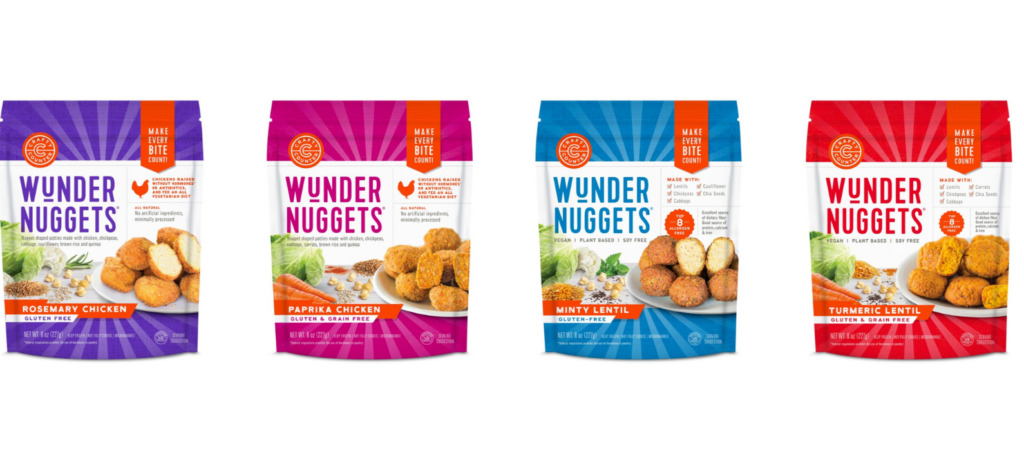 They are dishwasher and microwave safe. $9.99 for a set of 6
They are dishwasher and microwave safe. $9.99 for a set of 6
Homemade Baby Food Storage: For Freezing
Storing homemade baby food in the freezer allows you to make a bigger batch at once, and then serve it to baby over the course of a few weeks or months.The easiest way is to use an ice cube tray, which has the added benefit of portioning out the baby food nicely.
TIP: Any ice cube tray will do. You can use silicone ice cube trays if you prefer a non-plastic option.
Baby Food Storage Without An Ice Cube Tray
If you don’t have an ice cube tray or you’d just rather not use one, you can place a predetermined amount of baby food into a pint-size freezer bag. Remove as much air as possible, press flat, and seal. Place flat in the freezer to freeze. Then you can thaw the entire bag in the fridge overnight, or break off a portion of it to thaw.
How to Store Baby Food in the Freezer Step by Step
- Place baby food into each compartment of the ice cube tray, or fill as many as you need to with the amount of baby food you have.
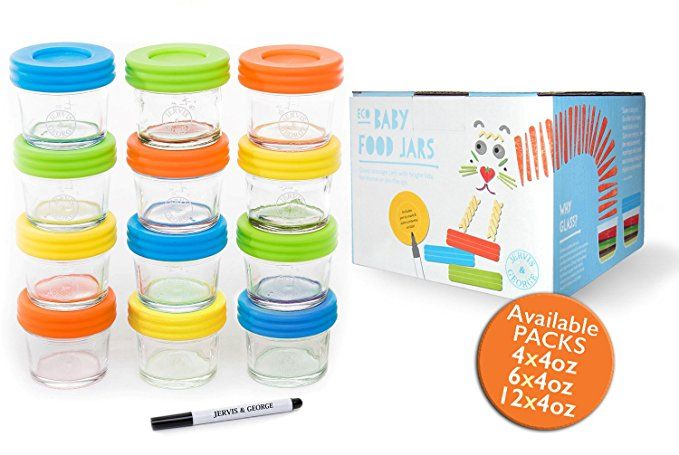
- Cover (if your ice cube tray has a cover) and freezer for 4-6 hours or overnight.
- Pop out frozen cubes and transfer to freezer storage bags. Label as desired with the type of baby food and the date.
- Store in the freezer for up to 3 months.
TIP: I like to have a bag of sweet fruit purees and more savory vegetable purees to avoid having too many separate bags in the freezer at any given time. Then you can combine them into baby food combinations easily!
How to Thaw Baby Food
To thaw baby food, simply remove a cube (or as many as you need) and place into airtight containers. Thaw overnight in the fridge and serve. 1 cube may be plenty for a baby aged 6-7 months and older babies may enjoy two cubes.
Tips for the Best Baby Food Storage
- Keep fresh baby food in an airtight container for up to 3 days in the fridge.
- Use a regular ice cube tray to freeze, a silicone ice cube tray with a lid, or a small freezer bag with the contents pressed flat.
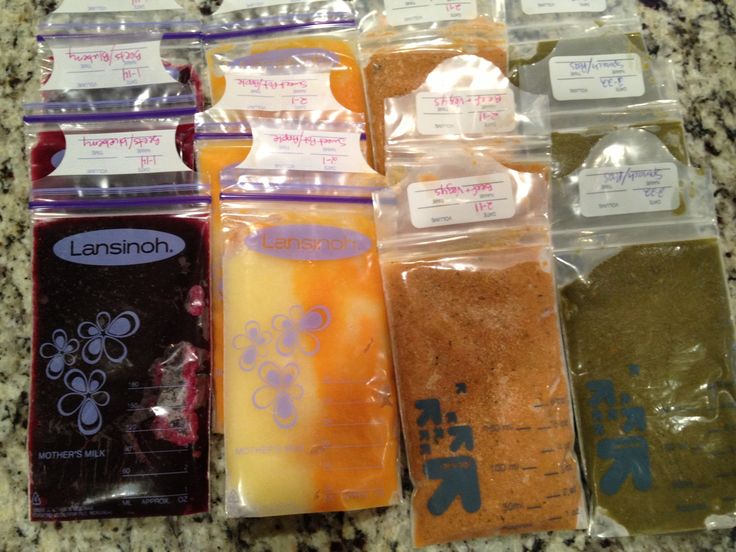
- Store frozen baby food in a freezer storage bag in the freezer for up to 3 months.
- To avoid freezer burn, try to remove as much air as possible from the storage bags.
- Label your bags with the contents and the date.
- To thaw baby food, simply remove a cube (or as many as you need) and place into airtight containers. Thaw overnight in the fridge.
- Use leftover baby food to flavor yogurt, baby oatmeal, baby rice cereal, smoothies, or cottage cheese.
- See some of my favorite Baby Food Pouch recipes here for more ideas on how to serve your baby food!
I’d love to hear your feedback if you have another storage technique or container that you love, so please comment below!
Storing Baby Food | Happy Baby Organics
AndieM.Ed., RD, LDN, CLC, RYT-200
Read time: 6 minutes
How to store homemade baby food and store-bought pureed foods
How to thaw and re-heat pureed baby food
How to help prevent bacterial contamination of baby foods
Whether you buy baby food at the market or make it from scratch, it’s important to know how to store, prepare, and reheat your baby’s food correctly and safely.
Store-bought baby food usually comes in a glass jar, plastic container, or pouch and usually does not require refrigeration or freezing before opening. These foods are manufactured to be shelf-stable, like any other pantry item (think beans, soups, or condiments). They can typically stay fresh on the shelf for 1 to 2 years, but always check expiration dates carefully.1
Baby food storage guidelinesPureed store-bought baby vegetables and fruits can stay in the refrigerator for up to 48 to 72 hours and in the freezer for 6 to 8 months.
Pureed store-bought meat, poultry, or fish can be refrigerated for 24 hours after cooking and frozen for 1 to 2 months.
Homemade baby foods will keep for 24 to 48 hours in the refrigerator and for 1 to 2 months in the freezer.2
Be sure to refrigerate freshly cooked baby food within two hours as bacteria will start to grow at room temperature after those two hours are up.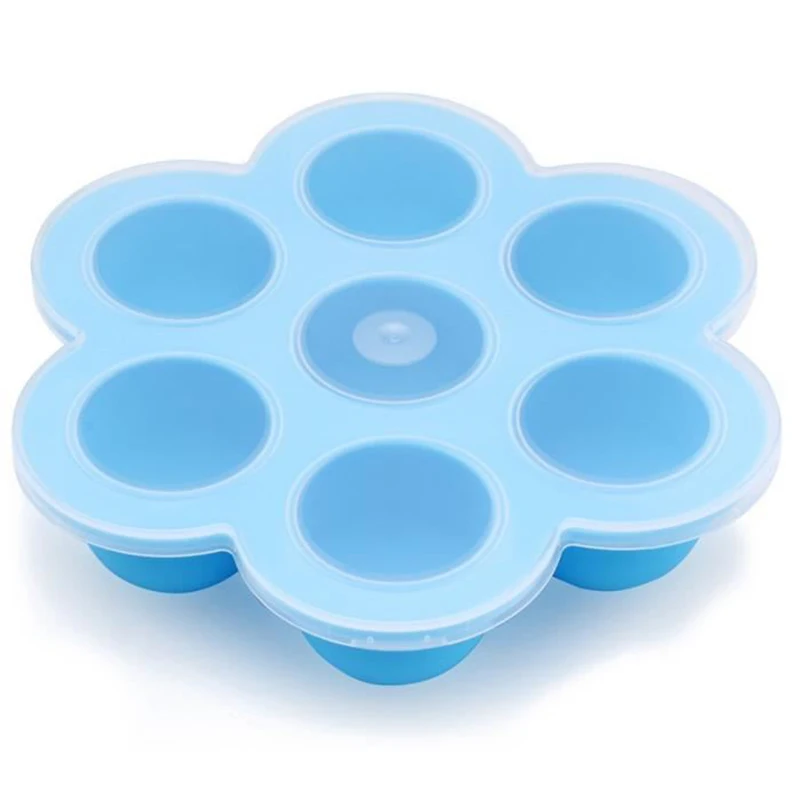 Note that your refrigerator should be kept at, or below, 40 degrees F. Any warmer and illness-causing bacteria can thrive and quickly multiply.3
Note that your refrigerator should be kept at, or below, 40 degrees F. Any warmer and illness-causing bacteria can thrive and quickly multiply.3
Want some tips on feeding your little one or on making baby food? The Happy Baby Experts are infant feeding specialists and here to help (for free!) with questions about starting solids and picky eating, as well as formula and breastfeeding. Chat now!
Can I feed baby directly from the jar or pouch?If you feed your little one directly from the jar or pouch, all leftovers must be thrown out after the meal. Saliva from baby’s mouth gets back into the jar or pouch via the spoon, this introduces bacteria that can quickly multiply and contaminate the food.
If you know baby won’t finish it all, spoon a serving in a separate bowl and feed from that. Then you can refrigerate the jar or pouch of remaining food for an upcoming meal!4
Read more: How Can I Make my own Pureed Baby Food?
How to warm refrigerated or shelf-stable foods and thaw frozen foods:Microwave: Warm up store-bought food directly in its glass jar or transfer the food – including previously frozen purees – into a separate glass bowl (never heat up pureed food in a plastic container or pouch).
 Reduce the microwave to 50% power (or use the defrost feature) and then warm the puree in 15 second increments.4 Check and stir the food thoroughly each time to ensure even heating and to eliminate any heat pockets that may burn your baby’s mouth.
Reduce the microwave to 50% power (or use the defrost feature) and then warm the puree in 15 second increments.4 Check and stir the food thoroughly each time to ensure even heating and to eliminate any heat pockets that may burn your baby’s mouth.Stovetop: Warm your baby’s store-bought food or thaw frozen baby food on the stovetop by placing the food in a small saucepan and warming on low heat until the puree is the same consistency and no longer frozen. To preserve the nutrients, heat only as much as is necessary.
Submersion Method: Thaw frozen baby food by placing the pureed cubes in a plastic bag and then inside a bowl filled with hot or warm water. This method allows for even warming but does take a little longer – figure about 10-20 minutes for the food to thaw fully. 5 Many parents also use the submersion method to thaw frozen breastmilk.
Refrigerator: Thaw frozen baby food simply by transferring it to the refrigerator.
 5 This process will take 4-12 hours so plan ahead (transferring the food the night before it’s needed to allow thawing overnight is a good rule of thumb). Homemade frozen baby food that’s been thawed can safely stay in the refrigerator for up to 48 hours. Be sure to keep thawed baby food in a sealed container to avoid contamination.
5 This process will take 4-12 hours so plan ahead (transferring the food the night before it’s needed to allow thawing overnight is a good rule of thumb). Homemade frozen baby food that’s been thawed can safely stay in the refrigerator for up to 48 hours. Be sure to keep thawed baby food in a sealed container to avoid contamination.DO NOT let baby food thaw for long periods of time on the counter at room temperature. This will allow bacteria to grow.5
Sanitize or thoroughly clean standard ice cube trays before spooning the puree directly into each cubed section. You could also cover a cookie sheet with parchment or wax paper and spoon small ‘mounds’ of puree onto the sheet to freeze.
Cover the tray with plastic wrap and place into the freezer.
Once the cubes or ‘mounds’ are solidly frozen, pop them out and store them in plastic freezer bags.
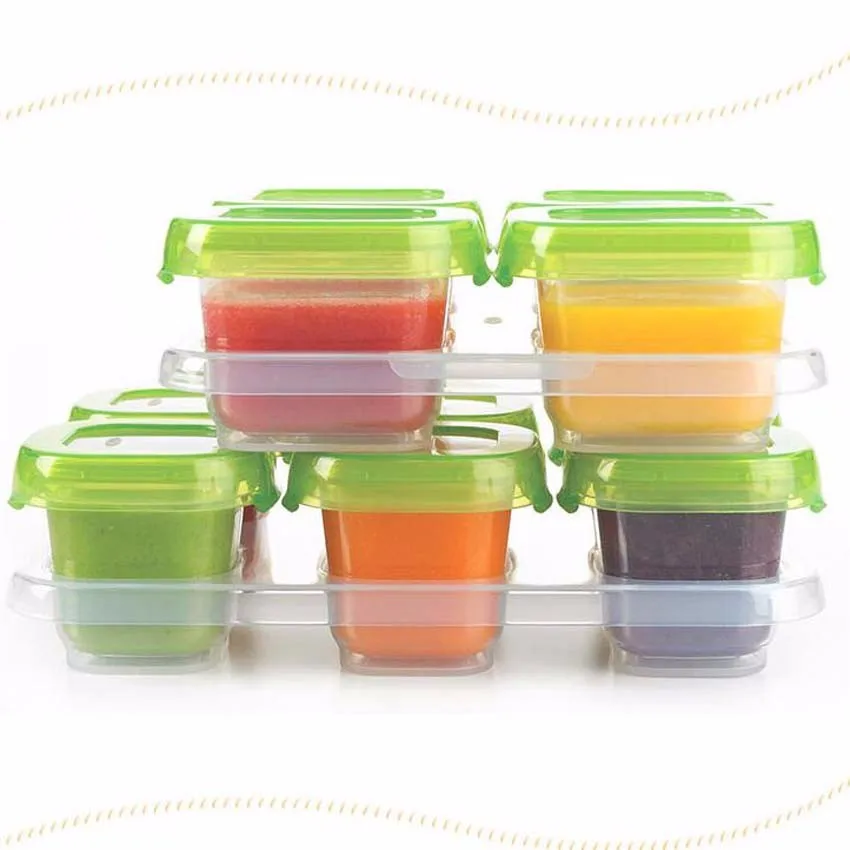
Label the bags with the type of baby food as well as the date. This allows you to use it before it expires. (Remember: store-bought fruits and veggies can be frozen for 6 to 8 months, while meats, poultry, and all home-made baby food can be frozen for 1 to 2 months).
When your baby is ready to eat, grab an individual portion of the cubes you want to use and thaw!
Ice cube trays are not only convenient, they are also incredibly helpful in portioning out homemade baby food. The cubes are roughly one ounce each, so you can easily measure the amount of food your baby is eating and thaw small portions at a time to reduce waste.
Do not freeze food in glass containersGlass baby food jars (or any glass container) are not meant to be frozen. Frozen glass can burst or cause tiny fractures in the glass leaving behind microscopic shards that you may never see.Freeze baby food in safe “ok to freeze” plastic containers instead.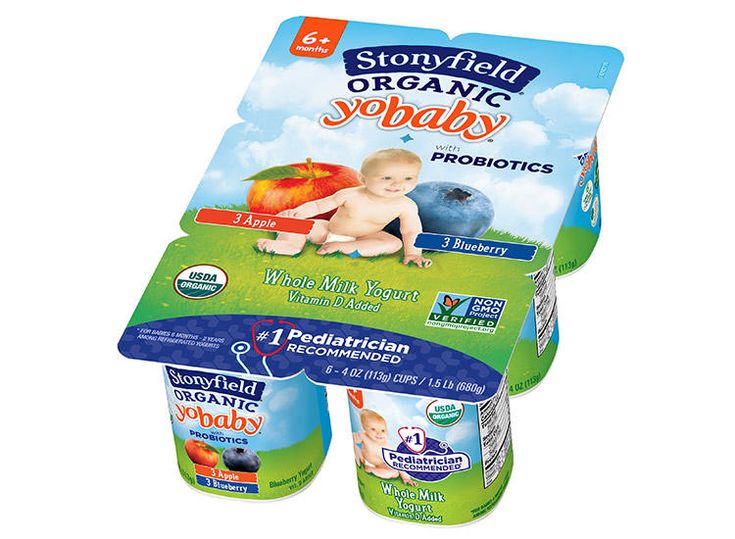
For best results, frozen foods should remain at a constant sub-zero temperature. A deep freezer is better equipped to handle this temperature control as opposed to your regular freezer, which may fluctuate with you opening and closing the door often.
Throw away leftover food that’s already been reheatedYou cannot reheat (or re-freeze) baby food more than once, so once you’ve thawed a frozen puree, toss any leftovers. This rule also applies to breastmilk. So if you’re using breastmilk to thin out your homemade baby food purees, add the milk while it’s fresh!
Read more: Safe Storage of Pumped Breastmilk
You can also use formula to thin a puree. Do not freeze formula in its original can or bottle, but once mixed into a puree it’s ok to freeze. Freezing formula causes a separation of the fats from the liquid, which may negatively impact the texture and quality.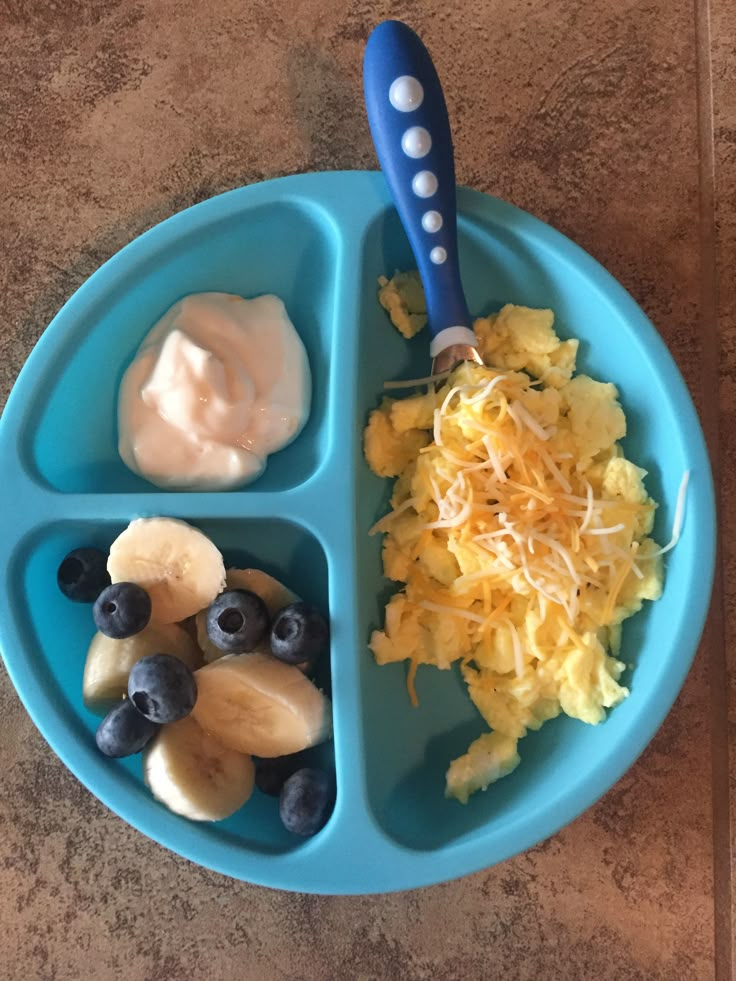 6
6
We know parenting often means sleepless nights, stressful days, and countless questions and confusion, and we want to support you in your feeding journey and beyond.
Our Happy Baby Experts are a team of lactation consultants and registered dietitian nutritionists certified in infant and maternal nutrition – and they’re all moms, too, which means they’ve been there and seen that. They’re here to help on our free, live chat platform Monday through Friday, from 8am–6pm ET. Chat Now!
Read more about the experts that help write our content!
For more on this topic check out the following articles
How do I Choose Store Bought Baby Food?
Food Safety for Babies and Toddlers
Everything You Need to Know About How to Prepare and Store Infant Formula
Avoid Giving Your Child Too Much Sugar And Salt
How to store baby food?
Food plays a huge role in the harmonious development of the child. Mothers are usually interested in the selection of the first baby food long before the introduction of complementary foods. We will devote today's article to the rules for storing baby food.
We've put together a few hacks to help you figure out how to keep different forms of baby foods fresh.
Prepared baby food storage rules
For those who don't bother with cooking their own complementary foods, things are a little easier. Product features and packaging method dictate the storage rules:
• Dry mixes and cereals are designed for long-term storage provided the packaging is intact. After opening the pack, the shelf life of the product is no more than three weeks. Manufacturers recommend storing cereals and mixtures packaged in jars in their original packaging. If you purchased the product in a cardboard box or in a bag, it is advisable to pour the contents into an airtight container.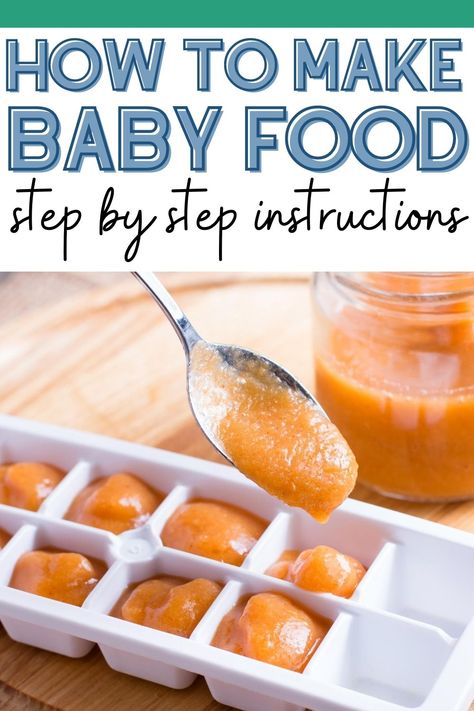 Food grade plastic boxes are perfect. It is safe to store even baby food in such containers, as they are made of materials that are specially designed to come into contact with food. The container itself should be stored in a dark, dry place. nine0005
Food grade plastic boxes are perfect. It is safe to store even baby food in such containers, as they are made of materials that are specially designed to come into contact with food. The container itself should be stored in a dark, dry place. nine0005
• Liquid and semi-liquid baby food (yogurts, juices, fruit drinks) can be stored for no more than five days from the date of its manufacture. An important storage condition is the temperature from 0 to 5 °C. After opening the package, dairy and sour-milk products should be consumed within a day. Fruit drinks, vegetable and fruit juices can be stored for up to three days.
• Canned food (mashed potatoes, pates, soups, cereals), depending on the composition, has a clearly defined shelf life. To prevent the product from oxidizing, after opening it must be stored in a tightly closed container. Opened baby food should be consumed within 24 hours. nine0005
Rules for storing homemade preparations for a children's table
There are two options for homemade preparations - use them immediately, or freeze them .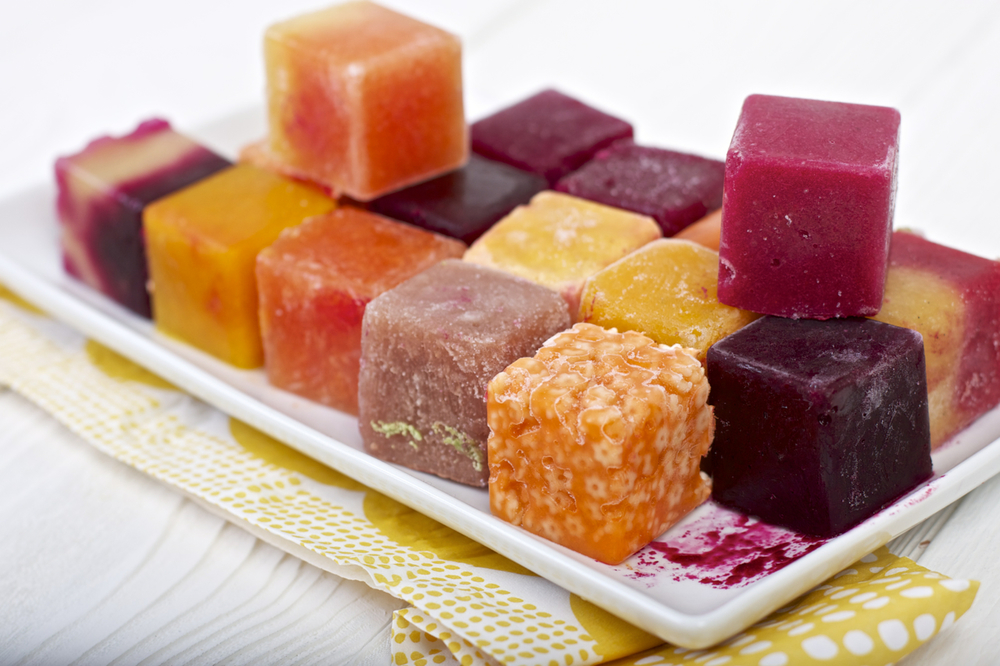
If we are talking about freezing, then there are several basic rules for the preparation of products:
• Fish products are frozen in a double mill, processed in front into portions of small pieces. Freeze more often in airtight boxes, resistant to low temperatures of the freezer. Meat freezing can be saved for about nine months, and ribna - only three. nine0005
• Vegetables and fruits can also be frozen in containers. In the freezer, the stench can lie no more than fate.
Defrost preparations for children's meals only in the refrigerator. Rizke heating can help the product of the greater part of the brown speeches.
Now you know all the secrets of saving a child's meal!
Other articles
Storage of baby food: terms and requirements for the storage of baby food
09/23/2019 32099
Contents of article
- Importance of proper storage of baby food
- About the safety of baby food
- Rules for storing different types of food
- General storage rules
All parents want to see their baby cheerful, active and healthy.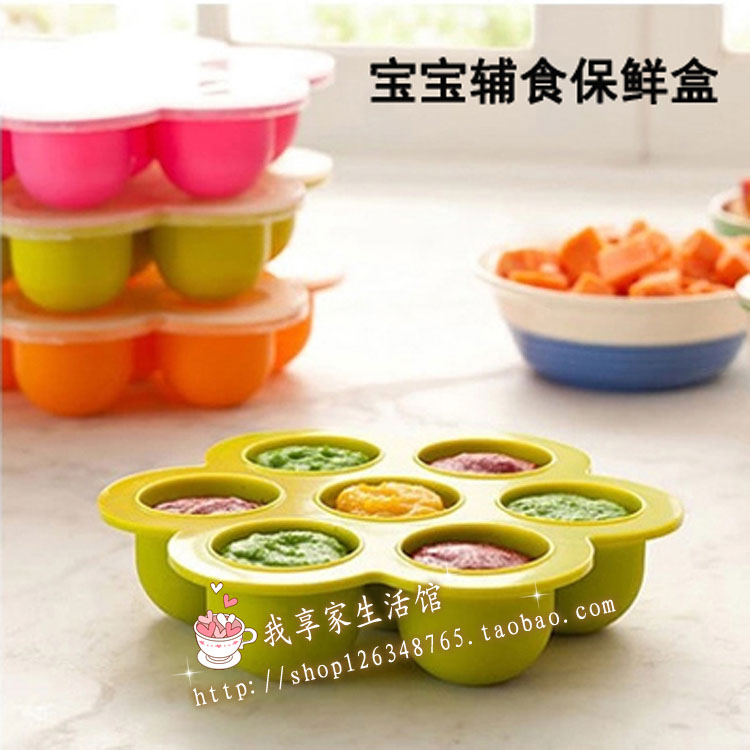 The harmonious development of the child largely depends on the correct and high-quality diet. The market for special baby food is striking in its diversity, and everyone strives to choose the best for the child. But for the safety of the baby and its full development, it is not enough to buy high-quality products. You also need to know how to properly store baby food. nine0005
The harmonious development of the child largely depends on the correct and high-quality diet. The market for special baby food is striking in its diversity, and everyone strives to choose the best for the child. But for the safety of the baby and its full development, it is not enough to buy high-quality products. You also need to know how to properly store baby food. nine0005
The importance of proper storage of baby food
Warmth, care and attention are necessary for all children. But the child is gradually growing, while he needs to eat varied. And here the question arises: is it possible to save the cooked product until the next feeding? Here it is important to pay attention to the fact that the child's immune system is not yet strong enough, so the storage of baby food should be given special attention. The well-being and health of the baby often depends on the conditions in which and how long they are kept. nine0005
About the safety of baby food
In the Russian Federation there is a whole regulation on the safety of food for children - that's what it is called. This document sets out requirements for manufacturers and sellers of children's products related to the protection of children from toxic and chemical substances. This applies not only to baby food produced in our country, but also imported from abroad. That is why when buying infant formula, porridge, puree or other product, you can be sure of its quality and safety. The regulation requires not only correct production, but also packaging, storage of baby food and its disposal: nine0005
This document sets out requirements for manufacturers and sellers of children's products related to the protection of children from toxic and chemical substances. This applies not only to baby food produced in our country, but also imported from abroad. That is why when buying infant formula, porridge, puree or other product, you can be sure of its quality and safety. The regulation requires not only correct production, but also packaging, storage of baby food and its disposal: nine0005
- Children's products are sold only through special stores or dedicated departments of supermarkets (therefore, it is better to buy them there or at least in a pharmacy).
- Expiration dates are set by the manufacturer, who is fully responsible for the quality of his product.
- Transportation of baby food is carried out in accordance with the requirements of the technical regulations for the transportation of any products. nine0090
At the same time, in the production of baby food, a number of conditions must be observed:
- Do not use highly acidic curd products.

- Do not add soy flour or grains contaminated with impurities.
- Offal is prohibited except for tongue, liver, heart and blood.
- Do not include in baby food beef with a fat content of more than 12%, pork - 32%, lamb - 9%.
- Do not use salted butter or products with a fat content below 82%*.
For a complete list of products prohibited in the production of baby food, you can follow the link attached to the article.
Rules for storing different types of food
Undoubtedly, breast milk is the most valuable and beneficial for a child. But there are situations when a mother needs to leave the house and she expresses milk in order to feed the baby on time. In addition, the child grows, over time he needs complementary foods. Expressed breast milk, formula-fed infant formula and complementary foods require a special approach, and it is very important to know the conditions and shelf life of baby food. nine0005
nine0005
How long can open packages of infant formula and cereals be stored?
This is important!
The shelf life of opened dry infant formula or cereal is limited to 2-3 weeks, sometimes 4 weeks for cereals (depending on the manufacturer - read the packaging carefully). After its expiration, this product cannot be prepared for a child. Dry mixes should be stored in a place protected from light, but not in the refrigerator.
Open jars (packages) of fruit, vegetable and meat puree should only be stored in the refrigerator. And after opening the package, you can eat only within 12 hours **. After the expiration date or 12 hours after opening the package, the product must be disposed of, since it can no longer be eaten. Yes, not only for children, but also for adults. nine0006 Also, many are interested in how long home-made baby food, such as freshly prepared vegetable or fruit purees and juices, can be stored. There are two main options to use immediately after preparation (the best) or freeze.
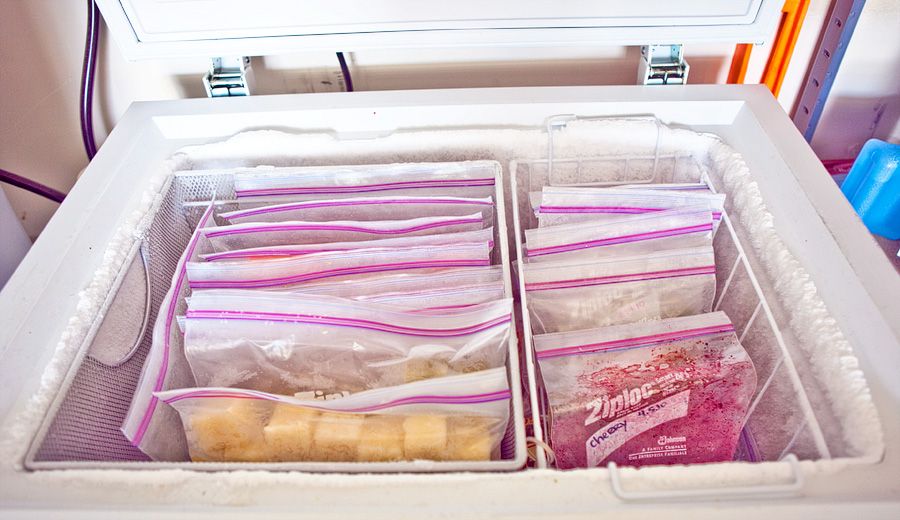 Such a product will also be suitable for eating for 12 hours, after which it will begin to deteriorate. Frozen fruits and vegetables can be stored in the freezer for up to six months, depending on the culture. However, even frozen products have expiration dates, after which it would be wiser to throw them away than eat them. nine0005
Such a product will also be suitable for eating for 12 hours, after which it will begin to deteriorate. Frozen fruits and vegetables can be stored in the freezer for up to six months, depending on the culture. However, even frozen products have expiration dates, after which it would be wiser to throw them away than eat them. nine0005 General storage rules
A huge variety and affordable cost of products greatly facilitate the worries of preparing complementary foods for children. But along with this, many parents face another problem: where to store baby food? So that the products do not lose their qualities from the influence of external factors, the following basic rules must be observed.
- Hygiene. Be sure to wash your hands thoroughly before preparing food and feeding your baby. The child's dishes should always be clean and stored separately in sterile conditions. nine0050
- Storage location. Dry cereals and mixtures should be stored in a ventilated cupboard out of the reach of children.
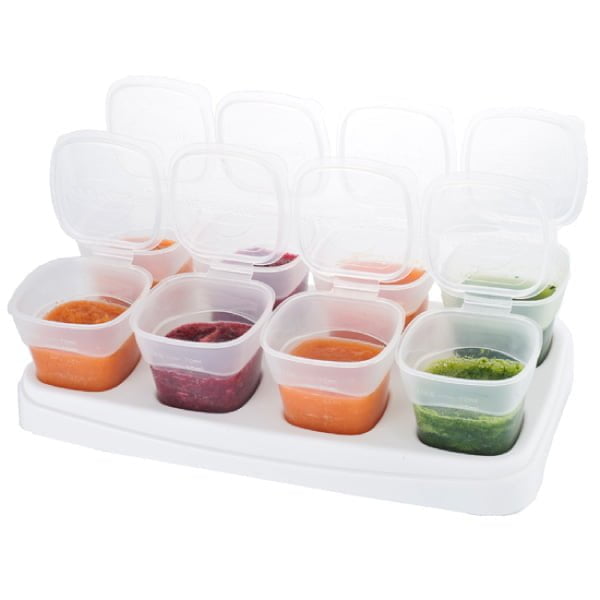 In caring for a baby, mothers are loaded with various problems and worries. It is difficult for them to remember everything, so it is recommended to stick a label on each product with the date of its opening. This will help you meet the deadlines.
In caring for a baby, mothers are loaded with various problems and worries. It is difficult for them to remember everything, so it is recommended to stick a label on each product with the date of its opening. This will help you meet the deadlines. - When feeding a child with vegetable and fruit juices, puree or fermented milk products in jars, it should be remembered that after the integrity of the package, the use of its contents is allowed on average up to 12 - 24 hours. Different manufacturers may have different terms, read carefully what is written on the label! Be sure to ensure that the integrity of the packaging has not been violated even in the store. Most manufacturers on the jars have a special protection against opening. Fresh puree in jars emits a characteristic “pop” when opened, juices must have either a protective foil film or a special opening mechanism. Unopened jars of juices and purees can be stored in the cupboard, while dairy products should only be kept in the refrigerator.


